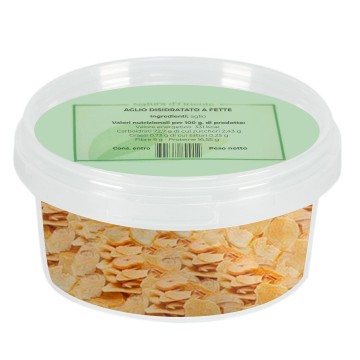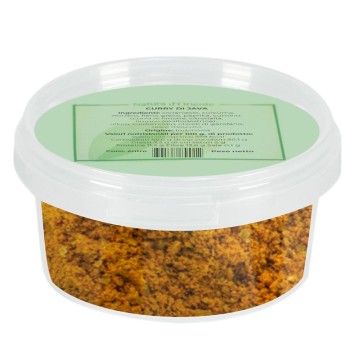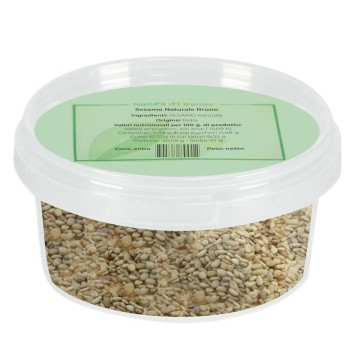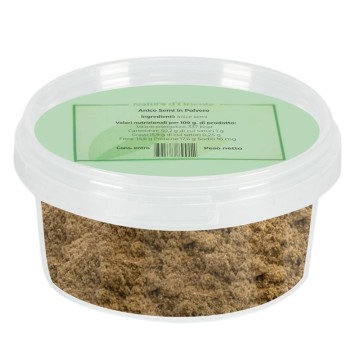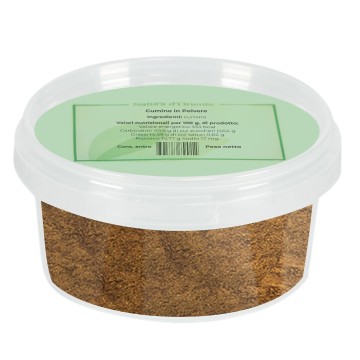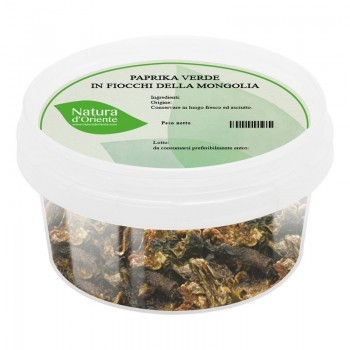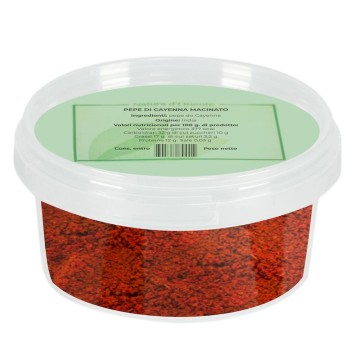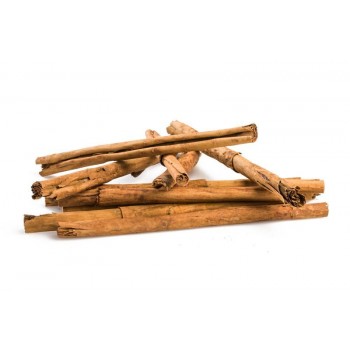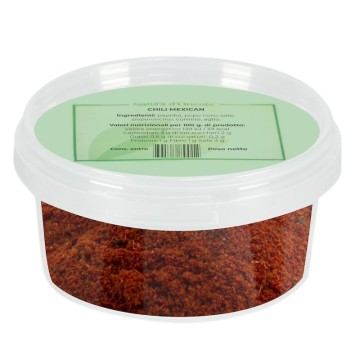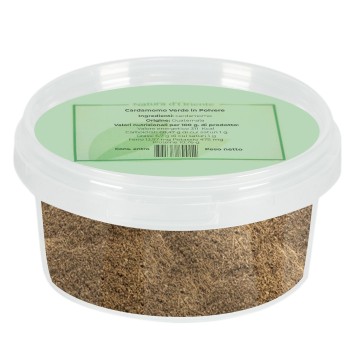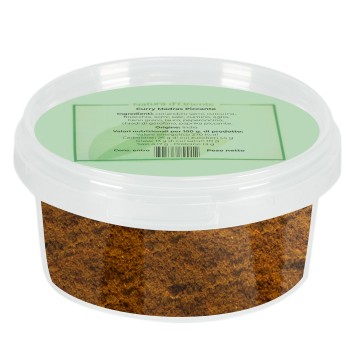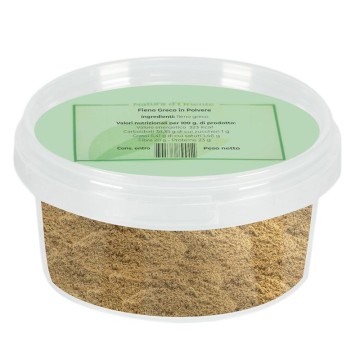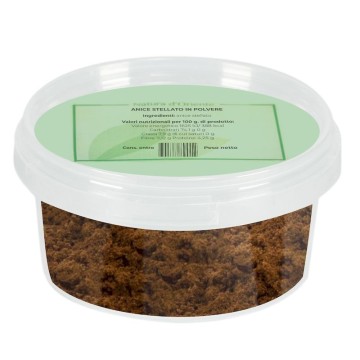Garlic powder: properties and benefits
The powdered version of garlic has the same properties as fresh garlic, rich in antioxidants and beneficial compounds. It contains allicin, an organic sulfur compound from which both the pungent smell of garlic and its healthy properties derive. Low in calories but rich in nutrients, garlic provides some virtues in the diet for the well-being of the body. It is a spice that helps the regular functioning of the cardiovascular system, also through the reduction of blood pressure. It acts on the metabolism of triglycerides and cholesterol, counteracting the formation of fat deposits - a useful role for the well-being of the cardiovascular system. Used for centuries for the well-being of the nose and throat, it promotes the fluidity of bronchial secretions; acts as an expectorant of excess mucus in case of colds or congestion. Its function is also known in digestion, and represents an antioxidant spice thanks to phenols and flavonoids. It has nutritional values that include vitamins, amino acids that promote purification, the beneficial compounds allicin and garlicin. These substances and their effects have made garlic famous as one of the most widespread and safe natural remedies, in particular for reducing blood pressure.
Origins and history of cultivation
Garlic is one of the oldest known plants to flavor food with. It is present in the culinary tradition of many civilizations and throughout the world. As a plant it probably originated in Central Asia in the wild, and then evolved over the millennia as the modern Allium sativum, or garlic. The ancient Indians managed to cultivate the plant and domesticate it during the Neolithic period, while in 3000 BC. approximately spread to the Middle East and Africa. It quickly reached Europe, thanks to its unique nutritional value and benefits considered medicinal at the time. The ancient Egyptians placed garlic inside the tombs of deceased pharaohs and used it in their diet to improve resistance and strength.
Among the ancient Greeks and Romans, garlic was even consumed by athletes before competitions and by soldiers before battles, as a strengthener. In ancient times it was known to all cultures for its properties, including for therapeutic purposes. It was used for its purifying properties: eliminating pathogenic germs from food and as a natural anti-inflammatory. According to an ancient belief, garlic was so powerful as a purifier that it kept vampires away.
According to the Talmud, the sacred book of Judaism, “five things are said about garlic: it satisfies, warms the body, makes the face shine, increases seminal fluid and kills the tapeworm." Over the centuries, hundreds of varieties of garlic have been created and are currently used throughout the world. In recent years this spice has gained widespread popularity, as scientific research has confirmed some beneficial effects. Today it is cultivated all over the world, and the main producers of garlic include China, the United States, South Korea, India and Spain.
How to use garlic powder in cooking
The powdered version is used as a condiment, as an alternative to fresh or dried but sliced garlic cloves. It represents a typical ingredient for sauces such as pesto and tzatziki, as well as being used as a flavoring for many recipes for soups, vegetables, meats and so on. The powdered version of garlic always comes from the edible part, the cloves (bulbils) dehydrated and ground into thin fragments. Garlic powder is perfect for meat and fish recipes, on roasts or in stuffings. It is used as an ingredient in the mixture of spices and aromas called rub: a condiment used on meat before cooking and for dry marinating; makes a tasty, aromatic and crunchy crust.
Kansas City pork ribs with garlic powder Ingredients: Pork ribs without ribs 800 g - Dijon mustard 100 g - Apple cider vinegar 100 ml - Fine salt 2 tablespoons - Sweet paprika 2 tablespoons - Onion powder 1 tablespoon - Yellow mustard powder 1 tablespoon - Brown sugar 1 tablespoon - Garlic powder 1 tablespoon for the rub (meat seasoning) - Garlic powder 40 g - Onion flakes 40 g - Paprika 125 g Black pepper 30 g - White pepper 30 g - Chilli powder 30 g - Fine salt 60 g - Raw cane sugar 60 g - for the finishing sauce Jack Daniel's Barbecue Sauce to taste Preparation
First we preparethe rib: eliminate any excess fat present and the membrane covering the bones of the rib. To clean the bones, lift an edge of the membrane using a pointed object: grab it with the help of a napkin to have a better grip. Pull gently and you will see that the membrane will come off easily.
Now sprinkle the surface of the ribs liberally with mustard. If you prepare more than one rib, overlap the ribs without problems.
Rest the meat while you prepare the rub (the mix of spices to sprinkle the meat). Combine the spices, including garlic, in a bowl. Mix them well to mix evenly. Distribute the rub over the ribs - the mustard previously applied will aid adhesion.
Do not save on the quantity of rub: the spices will form a crunchy and fragrant crust, which with its intense flavor will enhance the recipe. Now let the meat rest in the fridge, covering with aluminum foil while you prepare the barbecue.
Soak the wooden "chips" for smoking in water or beer for at least an hour. Light the coal or briquettes to place inside the BBQ on the sides of the dripping pan - this must be filled with water beforehand and kept there. Bring the barbecue to the operating temperature of 110°C and then insert the damp wood chips directly onto the coals. When they start to smoke, insert the ribs so that they are above the dripping pan. Close the lid. The wood smoke lasts on average about twenty minutes, after which you will have to fill up in order to make the smoking constant and continuous for a couple of hours. It is necessary to keep the temperature constant by acting on the air vents. Spray apple cider vinegar on the meat every hour to mitigate the effect of the smoke; in the absence of the sprayer you can also brush the vinegar, but you risk compromising the very delicate spice crust on the ribs. Also check every hour whether there is water in the drip pan and whether it is appropriate to add fuel to the BBQ. After approximately four and a half hours of cooking at 110°C, remove the ribs from the barbecue and brush them with Jack Daniel's BBQ sauce, working over the entire surface of the meat. Put the ribs back inside the barbecue after removing the liquid from the dripping pan. This operation allows the sauce to dry, and gives the ribs a unique color and flavor. The finishing operation takes about half an hour. At the end of this step you can proceed with cutting the meat and composing the dish with the accompanying Jack Daniel's sauce. The Kansas city ribs are ready!

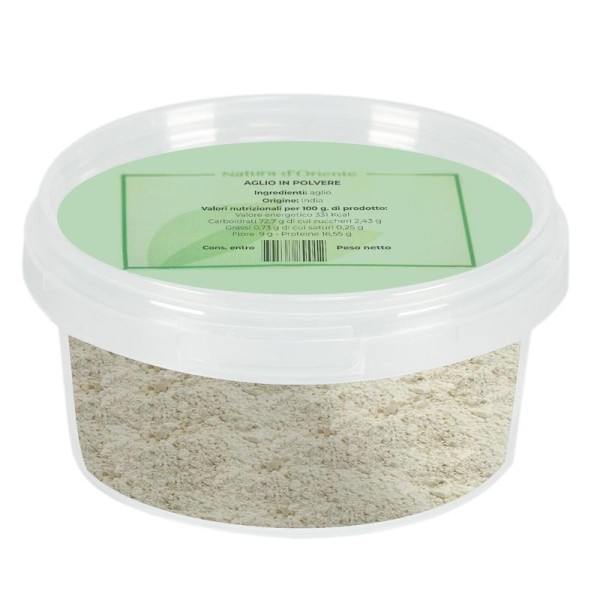







 No reward points for this product.
No reward points for this product.
